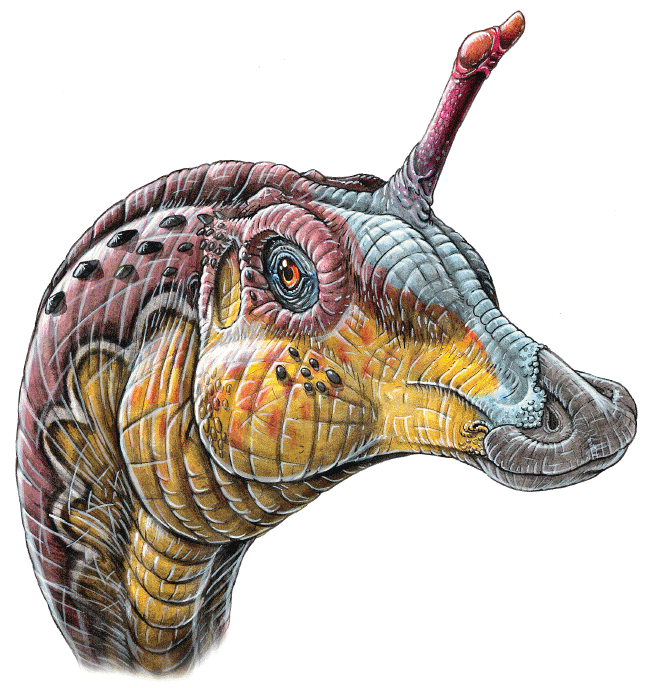|
|
|
Tsintaosaurus spinorhinus (Chien, 1958) |
|
 |
|
Name Means: |
"Tsingtao Crested Lizard" |
Length: |
33 feet (10 m) |
|
Pronounced: |
ching-Dow-o -SAW-rus |
Weight: |
3 tons (2,700 kilos) |
|
When it lived: |
Late Cretaceous - 80 MYA |
|
|
|
Where found: |
Shandong Province, China |
|
|
|
Tsintaosaurus
was a large,
heavily-built dinosaur that stood upright
on its hind legs. It is a member of the hadrosaur or duck-billed
group These plant-eating dinosaurs had
toothless beaks, strong jaws and
a massive battery of grinding teeth that
would have let them efficiently eat tough foliage. It could have
easily eaten pine needles or cycad fronds.
It's teeth were self-sharpening. They had four-fingered hands
and many of the
hadrosaurs had elaborate crests on their heads.
Tsintaosaurus did not have a crest, rather it had a
long horn in the middle of its forehead. Unlike crests which
faced backward, the horn projecting forward. This has led to it
often being called, "the Unicorn Dinosaur." The feature was so
unusual that scientists first thought that the fossil remains may have
been those of two animals mixed together, but that theory has now been
discarded. No one is sure of the exact shape of the horn that
developed around the fossilized bone. It may have been fat or
thin. Some authorities have speculated that it had a sail.
No one knows what the horn was used for. It may have provided a visual
signal in combat or courtship; it may have been used to make sounds,
or it may even have enhanced its sense of smell.
It is one of several strange dinosaurs discovered in
China. Tsintaosaurus was named by Young Chung Chien in 1958.
after the city of Tsingtao in Shandong Province, where the fossil was
found. The species name spinorhinus refers to the spine-like
crest on its head. Tsintaosaurus may be the same as Tanius
(which was named earlier and therefore retains its name), which was a
crestless Hadrosaurid from China. Tanius was named by Carl Wiman in
1929 |
|
|
|
|
|
|
|
|
Edugraphics.Net | Feenixx Publishing |
|
|
|
|
|